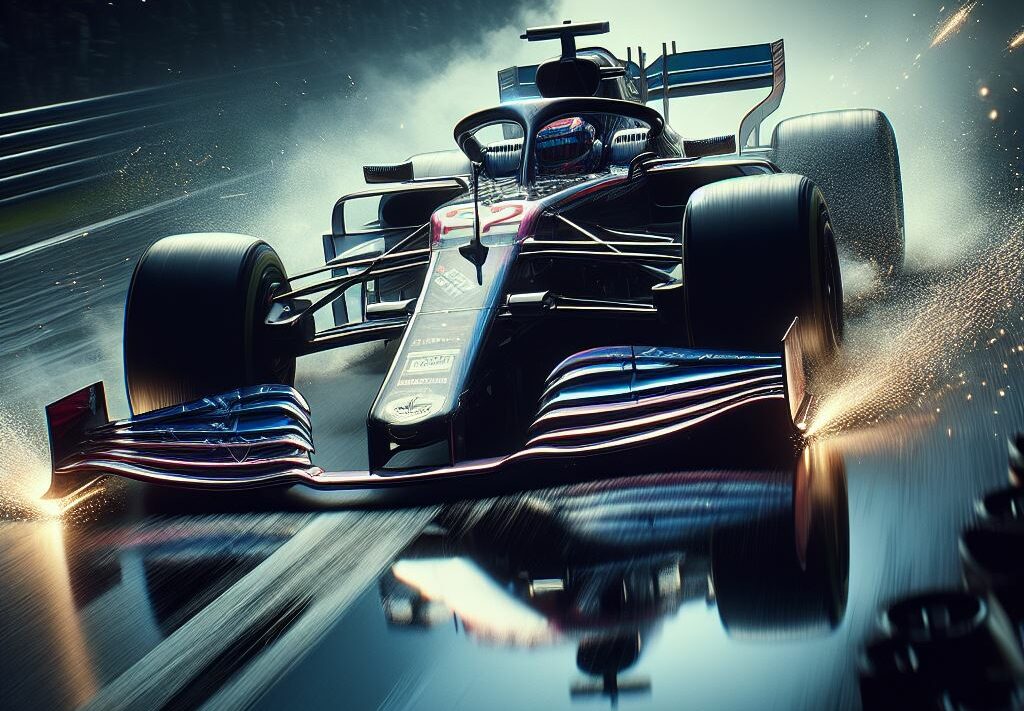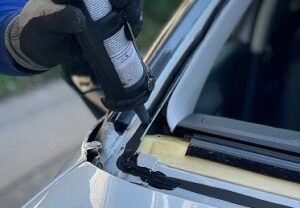Formula 1 cars have become recognizable for their open wheel and open cockpit nature. This is unique to other forms of motorsport such as touring cars, NASCAR, and WEC. However, may still wonder why F1 cars don’t have closed cockpits.
F1 cars don’t have closed cockpits as the open-wheel nature of the sport is one of the reasons it’s so famous. F1 tries to stick as close to tradition as they possibly can, and using closed cockpits would stray too far from the open-wheel DNA of Formula 1, which is an important part of the sport.
As the sport begins to focus more on the safety of the drivers there have been several different proposals made to make the cockpit of a Formula 1 car safer. While an entirely closed cockpit was an option that Formula 1 was considering, they ultimately decided to go for another solution.
Why F1 Cars Don’t Have Closed Cockpits
Formula 1 cars have been built with open cockpits right from the start, way back in 1950, and even in Grand Prix racing before that. Initially, the cars were designed with open cockpits and without seatbelts. The idea behind this was that the driver would be able to get out of the car much quicker and easier if the car crashed or caught on fire (not an uncommon occurrence back then).
Over the years the open-wheel nature of the cars remained. Luckily, seatbelts had been added to the cars over time, but the open cockpit became a signature for Formula 1 cars.
Formula 1 has considered moving towards closed cockpit cars in the past. However, many fans, drivers, and teams believe that the sport would lose its special feeling if this happened. Seeing the driver controlling their car from the onboard camera above their head is still something unique compared to other branches of motorsport such as DTM and WEC.
There had been many debates over how Formula 1 could become safer, and ultimately it was decided that the cars had to remain somewhat open in order to stick to the Formula 1 DNA. Other solutions were brought in to improve the safety of the cars, which we’ll discuss shortly.
How Open Cockpits Developed In F1
As recently as the early 2010s you can see Formula 1 cars that leave the driver extremely exposed inside the cockpit of the car. In even earlier cases, you can see the drivers’ neck and shoulders from the outside of the car, which shows just how exposed the drivers were back then.
During the 2000s the cars were adapted, and the sidewalls of the cars were brought up in order to protect the driver. Headrests were brought in in the late 1990s, with the HANS head and neck protection system following in 2003, and the drivers were much more enclosed within the cockpit, especially from the sides of the cars.
Changes Required
During qualifying for the 2009 Hungarian Grand Prix, Felipe Massa had an incident where he was struck in the head by a piece of debris that had come off the car ahead of him, knocking him unconscious. From this moment Formula 1 knew that their cars were still not safe enough for the drivers and that more development was necessary.
Following this incident though it was not the cars that were changed, but rather the equipment that the drivers had. The helmet visors were moved lower and made smaller. There was also an additional carbon fiber strip added above the visor. This was done to make the drivers’ eyes and forehead less exposed to flying debris.
The Closed Cockpit Debate Hots Up
The closed cockpit debate had gone quiet for a while after Massa’s accident, but in 2014 it sparked back into life following Jules Bianchi’s tragic incident at Suzuka. After Bianchi was killed in a crash at the Japanese circuit, Formula 1 knew that something had to be done to improve the safety of the sport.
Talks began on how the sport can become even safer for drivers. Formula 1 had not had a death for 20 years, since Ayrton Senna died in 1994. The cars had become much safer since then, but it was clear that they were still not safe enough.
Due to the nature of Bianchi’s incident, it was clear that the drivers’ heads were too exposed inside the car, and that something had to be done to shield them from the outside. Whether it was other cars, debris, or flying tires, it was clear that some sort of change was needed to keep these drivers safe.
The FIA began planning on how they could improve the safety of the cars, and three main concepts were considered. These were closed cockpits, the halo, and the aeroscreen. Closed cockpits were an option, and for many years people reluctantly believe that the sport was going to move towards closed cockpits. However, that option was soon ruled out.
Why Don’t F1 Cars Have Windshields?
Formula 1 cars have never had windshields. Windshields would take away from the open cockpit nature of the sport, and there is now thought to be no need for a windshield as F1 cars are now equipped with the halo.
Considering the fact that Felipe Massa’s incident could have been avoided with a windshield, it got many engineers thinking about Formula 1 cars with windshields. This is when the aeroscreen was born. This is the screen now used in IndyCar, which still allows for an open area directly above the driver’s head.
The downside of the aeroscreen or a windshield on a Formula 1 car is that it would impact the way that the car handles. It adds extra weight to the middle of the car which could unsettle the balance and change the way that Formula 1 cars handle.
In addition, the Aeroscreen is less aerodynamically efficient. Aerodynamics are crucial in a Formula 1 car, and engineers work hard to optimize it as much as possible. Adding a windscreen to the car would require massive aerodynamic redesigns in order to maintain optimal control over the airflow over the car.
Formula 1 opted to go with the halo instead. The halo was a much lighter and more aerodynamically efficient solution to the problem. It was also able to fit onto the cars in a better way without the need for a big redesign, and it still looked much more like an open cockpit car than it would with a windscreen.
Why Do Drivers Not Like The Aeroscreen?
The aeroscreen has since been introduced into IndyCar with mixed results. While the safety device has been doing its job perfectly fine, some of the drivers have shared their complaints about having a windscreen added to their cars.
The first issue was to do with visibility. The aeroscreen has affected the drivers’ visibility from inside the car, especially during sunsets and at night when the light reflects off the aeroscreen. However, many drivers insist that it has had no impact on their visibility from inside the car.
The other complaint is that the drivers were getting too hot inside the car with the aeroscreen. Previously the drivers had a lot of airflow inside the cockpit. However, the aeroscreen blocks that airflow entirely and can cause the temperatures to rise inside the car.
It’s not all bad though when it comes to the aeroscreen. Compared to the halo, it offers much more protection as the driver is completely enclosed inside the car (from the front), with just the top of the car being open. The halo on the other hand still has some open spaces where debris can enter the cockpit.
Will F1 Ever Have Closed Cockpits?
It’s unlikely that Formula 1 will ever have closed cockpits on their cars. However, as the subject of safety is discussed more and more in modern motorsport, there is always the slight possibility that fully enclosed cockpits could become a part of F1 in the future.
The cars are currently equipped with the halo device, which blocks large objects from hitting the drivers’ heads. However, there is still the possibility of smaller objects hitting the drivers’ head by passing through the open gaps in the halo.
There would be mixed feelings over Formula 1 cars with closed cockpits. While it would be done for safety, many of the fans would not be happy that the sport is straying away from its history and DNA, which is incredibly important in Formula 1.
Is The Halo Safe Enough?
While the halo does not fully enclose the driver inside a Formula 1 car, it has had its time to prove itself. The halo has been used for several years both in Formula 1 and in other branches of open-wheel racing, and it has done its job on numerous occasions.
There have been several incidents where the halo has saved the drivers from serious injury or even death in Formula 1 and in junior motorsport. The most famous recent example was when Romain Grosjean had a fiery crash in Bahrain in 2020. The halo undoubtedly saved his life, helping to split a barrier in two to provide room for him to pass through relatively unscathed.
Initially, the halo was also badly received by Formula 1 fans and drivers, mainly due to the aesthetic that it gave the cars, making them look bulkier and – to many people – even ugly. However, after proving how vital it is to the safety of the sport, the halo is now regarded as one of the best safety features of modern Formula 1 cars.
Perhaps this is a sign that closed cockpits could eventually make their way into Formula 1 in the future, even if they are poorly received at first. Once their use has been proven, fans and drivers will appreciate them being implemented into the sport. However, that does not seem to be on the horizon any time soon.
Final Thoughts
Formula 1 cars don’t have closed cockpits due to the cars being traditional open-wheel racers. The sport started off with open cockpits and F1 tries not to stray from traditions. Closed cockpits became a hot topic for debate, but the sport ultimately decided to go with the halo instead.
Text taken from: https://flowracers.com




